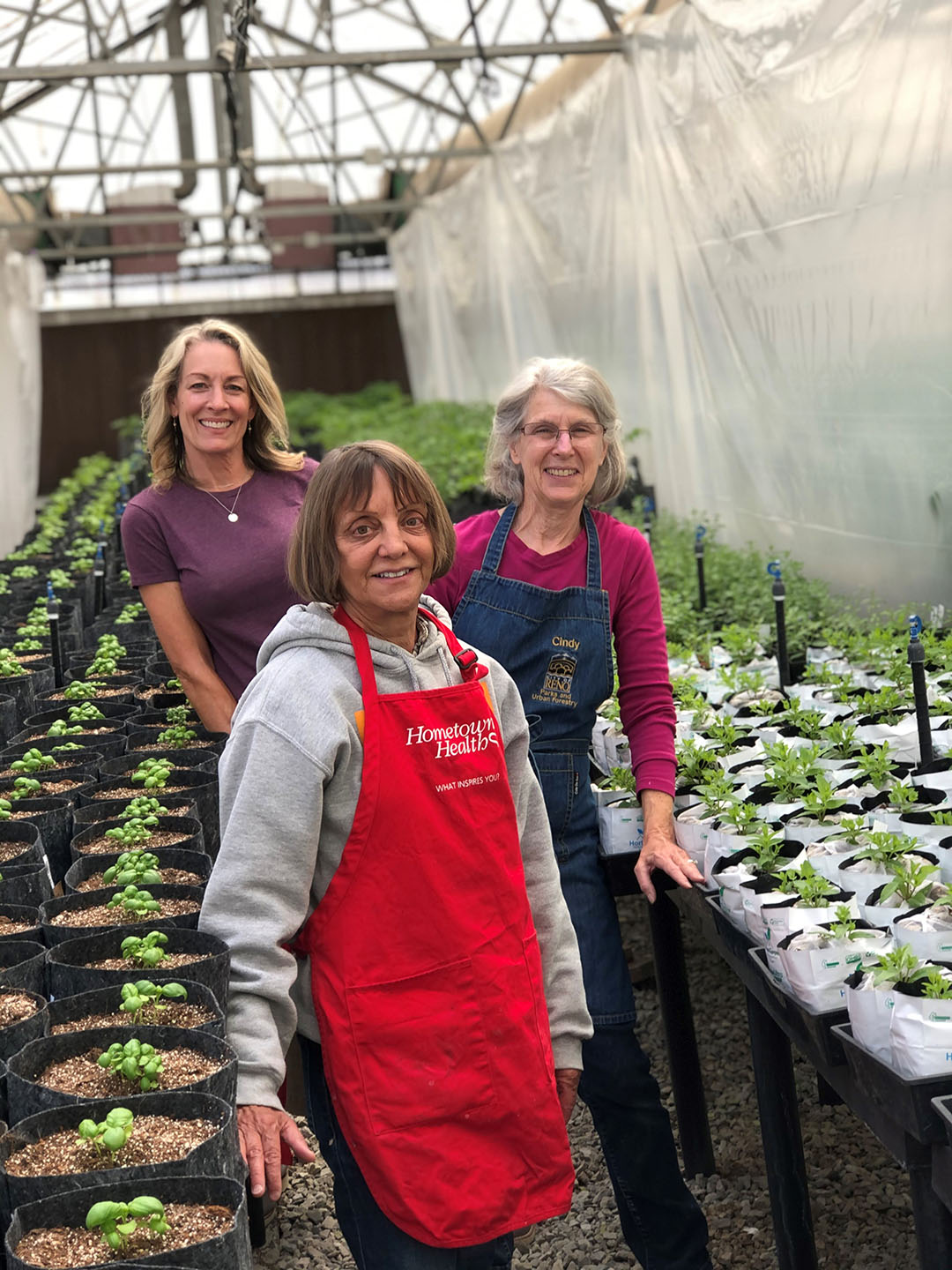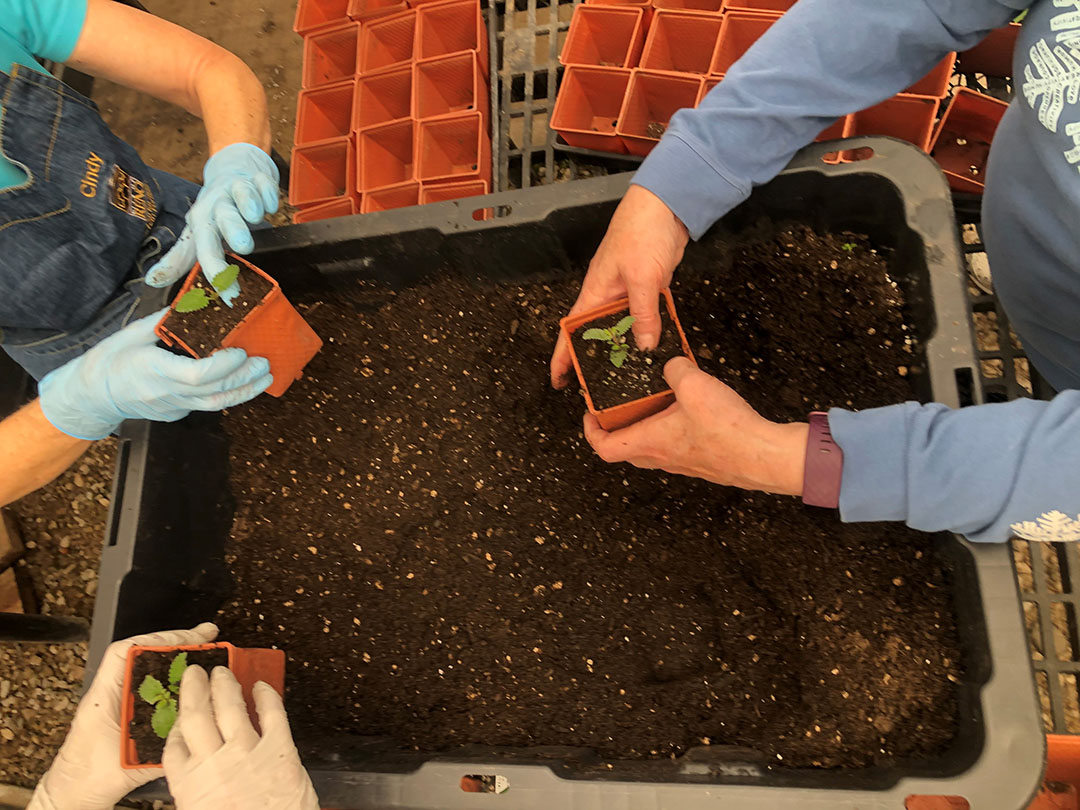How to successfully grow plants from seeds or seedlings.
One major lesson we’ve learned from the pandemic is food systems are fragile. A single misstep in the climate, growing cycle, or supply chain can limit the availability of food sources, especially in rural areas.
One way to encourage food equity is to grow your own. But in Northern Nevada’s variable, high-desert climate, this can prove challenging.
“There’s an empowering component to food sovereignty,” says Meagan O’Farrell, food justice manager for Reno Food Systems, of growing your own food. “But big-box stores often sell outside crops that are not adapted to our climate, and that damages our pollinators. Use crops that are tried and true in our area.”
Thankfully, horticulture professionals in the Reno-Tahoe area are adept at working within our area’s constraints. They believe that with proper guidance, residents can tier planting schedules and successfully grow seasonally appropriate vegetable gardens, despite our often-temperamental weather.
Getting Started
Let’s be straightforward: Growing your own vegetables can be a great deal of work. Yet little is more satisfying than biting into fresh produce you nurtured and grew yourself.
With some dedication and the help of area experts, a bountiful garden can be in your near future. To help you get started this spring, the master gardeners at the University of Nevada Cooperative Extension in Reno have compiled an abundance of knowledge within a single resource. The UNR Extension planting guide, found at Unr.extension.edu, provides regional and seasonal specifics for planting in Nevada, including what crops to plant and when.

O’Farrell explains that the guide is a “beautiful wealth of knowledge that really works,” because the team has taken the time to do the research and “do right by our environment,” including applying organic practices.
At Reno Food Systems on Mayberry Drive in West Reno, O’Farrell and team plot their plantings using Mother Nature as their guide. They begin selling seedling starts to blossoming gardeners in late-March or early April annually, and, to do so, they begin germinating their seeds in February.
While regional residents are largely beholden to the weather for planting in ground, you also can plan ahead now for next February to get started indoors at home.

Moana Nursery’s official plant doctor, Michael Roth, says to start seedlings indoors, begin by purchasing a seedling tray with multiple inserts filled with starter soil and a humidity dome. He explains that to germinate, the seedlings need warmth, not light, so for best results he suggests seeking out a quality growing light that puts out the proper growth spectrum: blue for germination, and red for the flowering stage.
He also suggests diversity in planting, and not overdoing it when you’re just starting out. Start with cold-resistant crops such as leafy greens and peas.
“[Nevada] is a gambling [state]. People win or lose, so take chances,” Roth says.
But he also mentions that in our area, we often have a “white Easter,” so once the starts are ready for planting, April is the soonest you want to get them in the ground. In fact, he says that there is truth to what is often believed by area gardeners to be an old wives’ tale: Don’t plant outdoors until Peavine Mountain is free from snow. Old wives, he says, are generally pretty smart.
Tips From the Pros
UNR’s master gardeners, including Rachel McClure, Washoe County’s master gardener coordinator, have an arsenal of information about gardening available for beginners.
Beyond the aforementioned guide, which is available free online, the UNCE offers a Gardening in Nevada course series at Bartley Ranch Regional Park in Reno through March. It’s a great place to problem solve, discuss ideas, and find community with other area gardeners. For details on this and other educational gardening courses, visit Growyourownnevada.com.
UNR’s master gardeners also are available for questions via email or phone, Tuesdays through Thursdays from 10 a.m. – 2 p.m. Email Mastergardeners@unce.unr.edu or call 775-784-4848.
The local food community, GrowingNV, will offer gardening courses online, with details and registration available at Growingnv.com.
DIY Dining
Once your seedlings have sprouted and temperatures are conducive to planting in the ground or a pot, O’Farrell recommends creating a succession garden with multiple rounds of crops. This entails multiple rounds of seedling starts.
First, plant the cold-weather-friendly starts, such as leafy greens, including parsley, chard, kale, arugula, and lettuce. Then, in late May or early June, plant your warmer-season crops such as tomatoes, basil, eggplant, squashes, and melons.
“People want to plant when it works for them, and then when unsuccessful, it boils down to not being the right time of year,” O’Farrell says. “Our goal is to get people to be successful gardeners, so it’s a relatively cookie cutter experience for them. The seasonally appropriate release of seedlings that will be successful will cultivate more growers.”
For instance, she tells people struggling to grow tomatoes that they should enjoy their cool-season crops for now. Many growing troubles stem from not working with the seasons we have here, which often only permit narrow growth timeframes.
Warm-weather crops are sensitive to cold and won’t succeed when planted too early. (Though planting some early girl tomatoes will help in producing some fruits during that short window of time.)
Another suggestion is to plant according to size, considering the heights to which plants will grow. Taller growth can provide valuable wind breaks, shade, and pollinator habitats for the shorter ones.
Maximize space by tiering plants — for instance, planting berries below fruit trees, then herbs and medicinal plants below those. Together, with the different canopy layers, the plants form a community that protects and nurtures one another.
Once fall hits and the plants begin to go to seed, you can let them run their course and create your own seedlings next February. Now you’re already ahead of the game for next season!
Natasha Bourlin is a freelance writing amateur gardener who adores growing her own veggies each season. And she enjoys sharing edifying tidbits with readers on the same mission.
Where to Buy Seedlings
Rather let someone else get the seeds started this spring? Seedlings are easy to find locally.
Reno Food Systems begins selling ready-to-plant garden starts at its Northwest Reno nursery in late March or early April and continues through June, which is the latest the staff recommends planting as the growing season shortens.
In May, the master gardeners sell their starts at an annual seedling sale. For details, visit the UNCE website or find University of Nevada, Reno Extension Master Gardeners on Facebook.
The Great Basin Community Food Co-op has a seedling sale scheduled for May 21, and orders for plant starts from Reno’s Desert Farming Initiative currently can be placed online at Naes.unr.edu/dfi. DFI also will sell plant starts at campus farm stands and the Sparks United Methodist Church Farmers’ Market starting in July.
Get growing this spring with help from these regional resources, and ready yourself for bragging at summertime barbecues, “Why, yes, I DID grow everything in that salad!”
RESOURCES
Desert Farming Initiative
Naes.unr.edu/dfi
Moana Nursery
Moananursery.com
Reno Food Systems
Renofoodsystems.org
UNR Master Gardeners
Extension.unr.edu/master-gardeners or 775-784-4848


